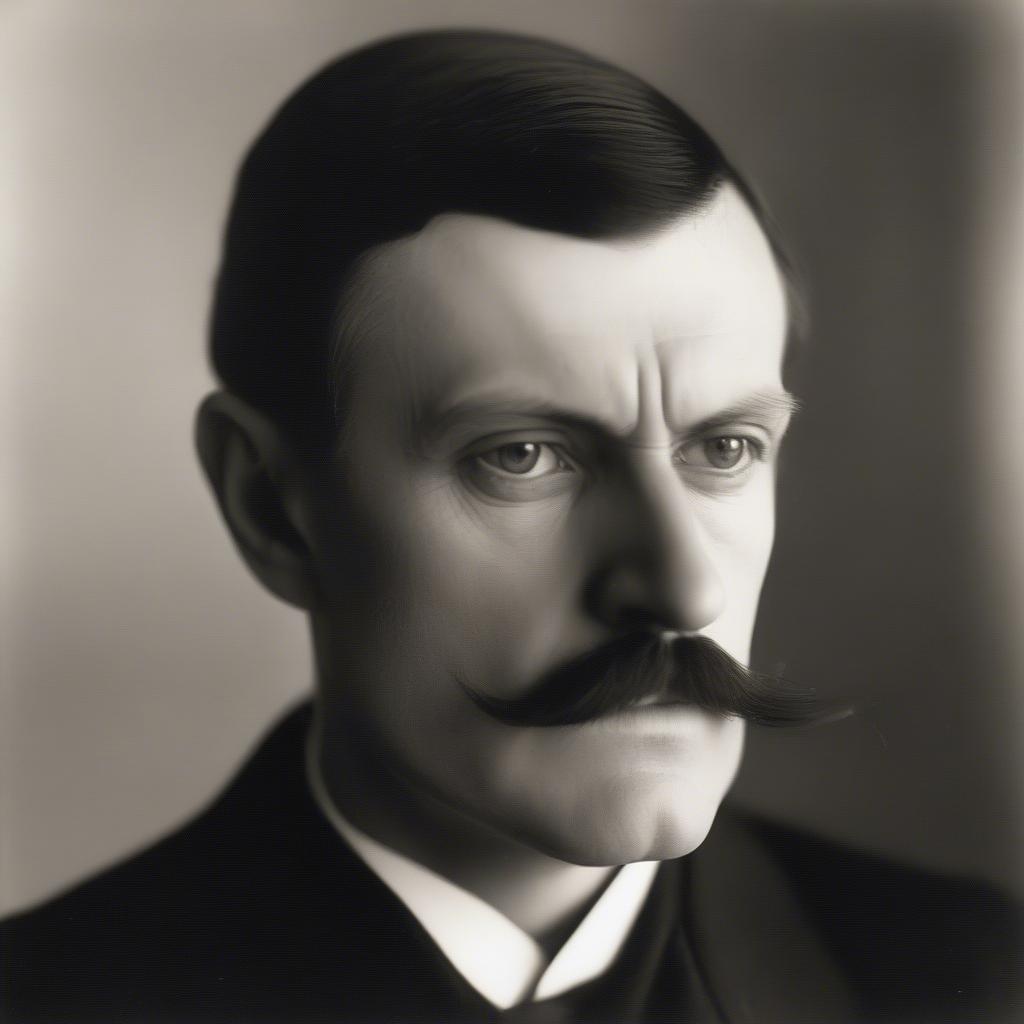
Edvard Munch, a Norwegian artist, is the painter of the iconic and haunting masterpiece, The Scream. This artwork, known for its swirling lines, vibrant colors, and the central figure’s expression of existential dread, has become a symbol of anxiety and alienation in the modern world. While often referred to as a single painting, The Scream actually exists in four versions: two pastels, one painting, and a lithograph. Each version, created between 1893 and 1910, showcases Munch’s exploration of the themes of anxiety, fear, and the human condition. Understanding who Munch was, both as an individual and as an artist, provides a deeper appreciation for the complexities and emotional depth of The Scream.
Table Content:
Edvard Munch: A Life Marked by Loss and Angst
Born in 1863 in Løten, Norway, Munch’s childhood was marred by illness and loss. His mother died of tuberculosis when he was five, and his sister succumbed to the same disease a decade later. These early experiences with death and suffering profoundly impacted Munch’s artistic vision, shaping his fascination with themes of mortality, anxiety, and psychological turmoil. He once wrote, “From my rotting body, flowers shall grow and I am in them and that is eternity.” This sentiment resonates throughout his work, including The Scream.
The Birth of The Scream: A Moment of Intense Emotion
Munch described the inspiration for The Scream in his diary, recounting a walk at sunset when the sky turned blood red. He wrote of feeling a “great scream in nature,” a sensation that became the genesis of the artwork. The swirling lines and distorted landscape reflect the intensity of this experience, visually representing the overwhelming sense of anxiety and alienation that gripped him. The simplified, almost skeletal, figure with its hands clasped to its face becomes a universal symbol of human suffering.
 The Scream Painting by Edvard Munch
The Scream Painting by Edvard Munch
Exploring the Different Versions of The Scream
The existence of multiple versions of The Scream allows us to trace the evolution of Munch’s artistic process and his continued engagement with the themes explored in the artwork. The two pastel versions, created in 1893 and 1895, exhibit a rawness and immediacy that capture the visceral nature of the experience Munch described. The painted version, completed in 1893, utilizes a bolder color palette, further emphasizing the emotional intensity. The lithograph, produced in 1895, made the image more accessible to a wider audience, contributing to its iconic status.
The Scream and Expressionism
The Scream is considered a seminal work of Expressionism, an artistic movement that emerged in the late 19th and early 20th centuries. Expressionist artists sought to convey inner emotions and experiences through distorted forms, vibrant colors, and evocative imagery. Munch’s focus on psychological themes and his use of expressive techniques place him firmly within this movement, making The Scream a powerful representation of the Expressionist aesthetic.
The Legacy of The Scream
The Scream has transcended its artistic origins to become a cultural icon. It has been appropriated in countless forms, from film and television to advertising and political commentary, reflecting its enduring relevance in contemporary society. Its image continues to resonate with audiences, serving as a visual shorthand for anxiety, alienation, and the challenges of the human condition. “Munch’s art reflects the anxiety and uncertainty of modern life,” says art historian Dr. Emily Carter, “and The Scream perfectly encapsulates this feeling.”
The Scream: A Timeless Reflection of the Human Condition
Edvard Munch’s The Scream is more than just a painting; it is a visual manifestation of human emotion, a timeless reflection of the anxieties and uncertainties that define the human experience. Its enduring power lies in its ability to connect with viewers on a deeply personal level, reminding us that the struggles depicted within the artwork are universal and enduring. As another art expert, Professor David Miller, notes, “The Scream is a powerful reminder of the vulnerability and fragility that lies at the heart of the human experience.”
 The Scream Influence in Pop Culture
The Scream Influence in Pop Culture
Conclusion
So, who is the painter of The Scream? He is Edvard Munch, a Norwegian artist whose personal struggles and artistic vision gave birth to one of the most iconic and impactful images in art history. The Scream continues to resonate with viewers today, serving as a powerful testament to the enduring power of art to capture the complexities of the human experience.
FAQ
What inspired Edvard Munch to paint The Scream? Munch described a vivid experience of a blood-red sky and a “great scream in nature” as the inspiration for the artwork.
How many versions of The Scream are there? There are four versions: two pastels, one painting, and a lithograph.
What art movement is The Scream associated with? The Scream is considered a key work of Expressionism.
Where can I see The Scream in person? The versions of The Scream are housed in the Munch Museum and the National Gallery in Oslo, Norway.
Why is The Scream so famous? Its powerful depiction of anxiety and alienation has resonated with audiences for over a century, making it a cultural icon.
What is the meaning behind The Scream? The painting is often interpreted as representing the universal human experience of existential anxiety and the overwhelming nature of modern life.
What techniques did Munch use in The Scream? Munch used swirling lines, vibrant colors, and a simplified, expressive figure to convey the intensity of the emotional experience.
